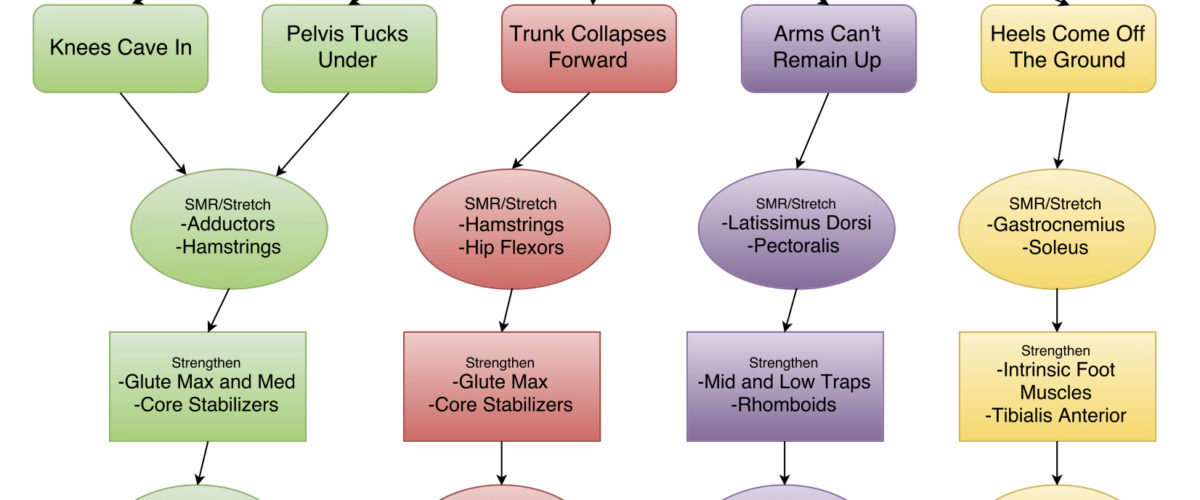Guest Post by Adam McCluskey
Let’s face it, everyone wants an engaging and magnetic experience when they start something new.
Everyone wants their excitement, uncertainty, and expectations to be met with overwhelming satisfaction.
Basically, everyone wants the “WOW” factor.
The fitness business is no different. Clients come to us with very different experiences and expectations, but in the end all want the same thing.
They want to be completely reassured that they are at the right place, with the right person, to meet their specific goals.
Satisfied client referrals are still one of the best ways to grow your fitness business.
Due to my current training in physical therapy, I want to approach this topic with from a slightly different angle.
So let’s dive into how functional anatomy, biomechanics, and corrective exercise can help create satisfied customers for life!
Science and the Wow Factor:
It’s pretty cool when you think about it.
We are getting paid to teach people how to do something we are passionate about…while wearing workout clothes.
While our attire might be casual, our approach to the science behind exercise should not be.
Our clients have come to us for our guidance and expertise. They have entrusted us with their health and fitness goals.
It is essential that we earn that trust, and deliver the highest quality, science-based training we can.
In doing this we are providing what is truly best for our clients, and as a by-product, we are creating the Wow factor.
3 Ways to Build the Wow Factor:
1. Do a posture and movement assessment.
This is my favorite way to provide value and show your expertise very early on.
It can be done in relatively little time, and provides the foundation you need to design every workout your client does.
 Posture analysis gives you a glimpse into what your clients are like outside of the gym.
Posture analysis gives you a glimpse into what your clients are like outside of the gym.
Are their shoulders rounded forward? Do they lock out all of their joints when standing normally?
These observations give you insight as to what muscles might be weak or tight. Make note of these observations and move on to the movement analysis.
The easiest way to spot weakness, tightness, and overall poor movement is by watching them squat.
Do their heels come up off of the ground? Consider limited ankle mobility. Do their hips tuck under while going into the squat? This is usually a sign of tight hamstrings. Do their knees cave in on the way up? They most likely have glute weakness.
Being able to spot these things, and tell your client what they mean, builds instant rapport. From here, tell them exactly how you will tailor their workout plan to help fix these issues.
You are the professional and you have the knowledge and expertise to create a plan designed just for them! This is a great way to let your client know that.
2. Share Your Knowledge!
This must be done strategically or it can have the opposite effect.
Early on in my career, I would start spouting off certifications and dropping knowledge bombs within 5 minutes of the initial consultation.
Needless to say, potential clients didn’t respond well to this, and neither did my sales numbers.
Although, if used at the appropriate times, this can be extremely powerful.
If you’re able to explain succinctly why you chose a certain exercise and exactly how it helps your client reach their goal, they will love it!
This is not only educational for them, but it continues to build trust in you as their coach and leader.
I’m not saying this is the time to discuss actin and myosin cross bridges.
I am saying that if you can clearly explain what muscles are working, and why it’s important for them, they will appreciate your expertise.
I have said to many clients, prior doing planks: “I know you don’t love these, but this exercise engages your deep spinal stabilizers, which is the foundation for a really strong core.
It has also been proven to decrease risk of developing low back pain.”
Suddenly this becomes more than just an exercise you whipped up to make them sweat. It becomes personalized to them.
It was picked because it helps them accomplish the goal they entrusted you with.
3. Provide a Completely Unique Product
The power of a customized, designed-for-you program can be huge!
If they wanted a cookie-cutter program, there are endless online guides and group classes they could go to. These are typically much cheaper as well.
Every single person is different. Their strengths, weaknesses, and movement patterns are all unique to them. Therefore it only makes sense that each client will get better results from a customized plan.
As a great personal trainer you can provide a program that takes all of these things into account, and design a plan that is customized perfectly to their needs.
If you can convey this to your client, and deliver with good results, you have achieved wow factor level 5000!
Now for the take-away, literally:
So at this point I hope you have been able to glean a few things you can implement in your business right away.
Still, I want to give you something tangible you can print out and keep with you for reference.
That’s why I created this flow chart for you to use during movement assessments. It outlines deviations to look for when your client is performing an overhead squat, and what to do to help correct it.
If used properly this can build tons of credibility, and set you apart as fitness professional!
Click HERE to download your FREE Overhead Squat Assessment Flow Chart <——
Written by: Adam McCluskey
Adam McCluskey is a Doctor of Physical Therapy Candidate, Corrective Exercise Specialist, and Founder of The Personal Trainer Initiative.


